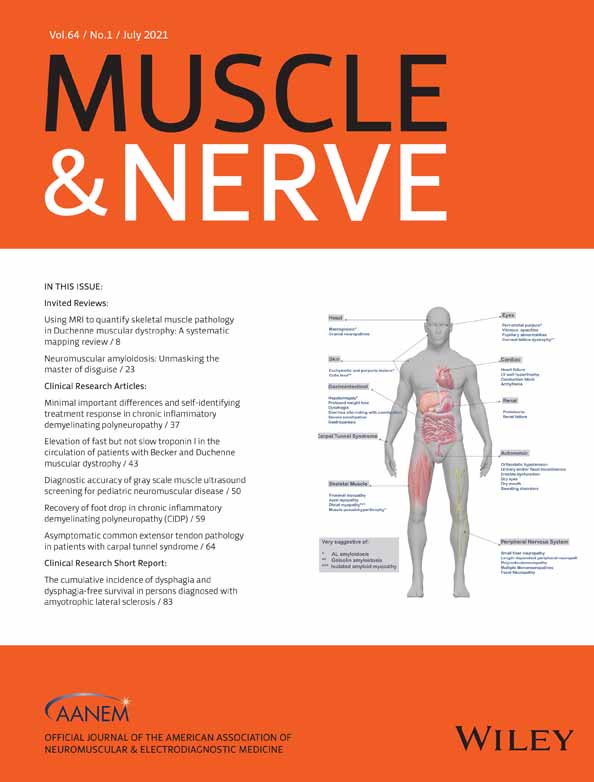Asymptomatic common extensor tendon pathology in patients with carpal tunnel syndrome
Abstract
Introduction/Aims
Carpal tunnel syndrome (CTS) and lateral epicondylitis are both highly prevalent conditions. Our objective was to determine the prevalence of B-mode ultrasound abnormalities of the common extensor tendon (CET) in patients with CTS and establish the relationship between CET stiffness, as measured by shear wave elastography (SWE) and CTS severity.
Methods
Patients without symptoms or signs of lateral epicondylitis were recruited from referrals to a neurophysiology laboratory for possible CTS. These patients were examined for clinical features of CTS before undergoing electrodiagnostic testing followed by an ultrasound examination, consisting of B-mode, power Doppler, and SWE.
Results
Thirty-nine limbs with clinically diagnosed CTS and 20 control limbs were included. Of the CTS limbs, 61.5% had sonographically abnormal CET compared with 35% of the controls. The mean CET sonographic abnormality score was higher in CTS patients compared with controls (P = .006). CTS patients with sonographically abnormal CET had more severe CTS by electrophysiological criteria. The mean CET stiffness in CTS patients was lower than in controls (P = .033).
Discussion
Sonographic abnormalities of the CET are common in CTS patients with no clinical evidence of lateral epicondylitis and may relate to common pathogenetic mechanisms. These findings suggest that isolated ultrasound abnormalities in the CET are not diagnostically useful in patients presenting with upper limb pain unless there are clinical features of lateral epicondylitis.
CONFLICT OF INTEREST
The authors declare no potential conflicts of interest.
Open Research
DATA AVAILABILITY STATEMENT
The data that support the findings of this study are available from the corresponding author upon reasonable request.




